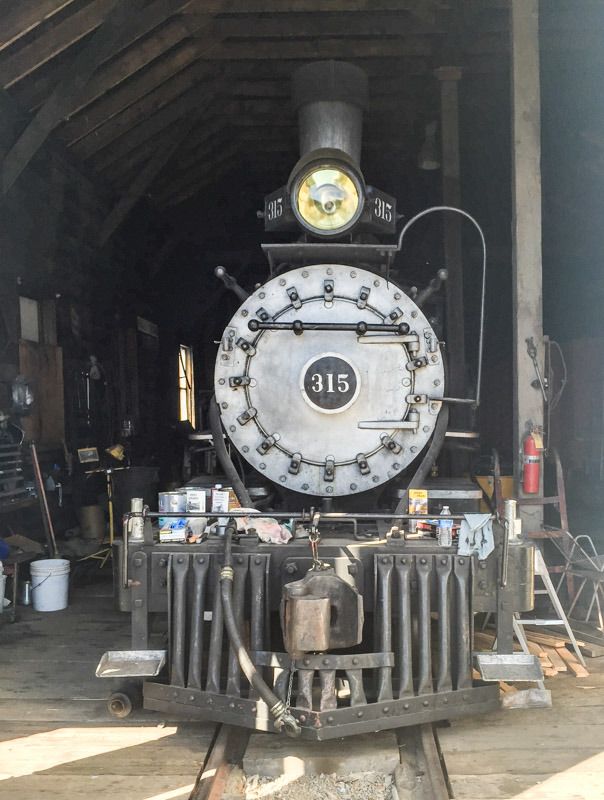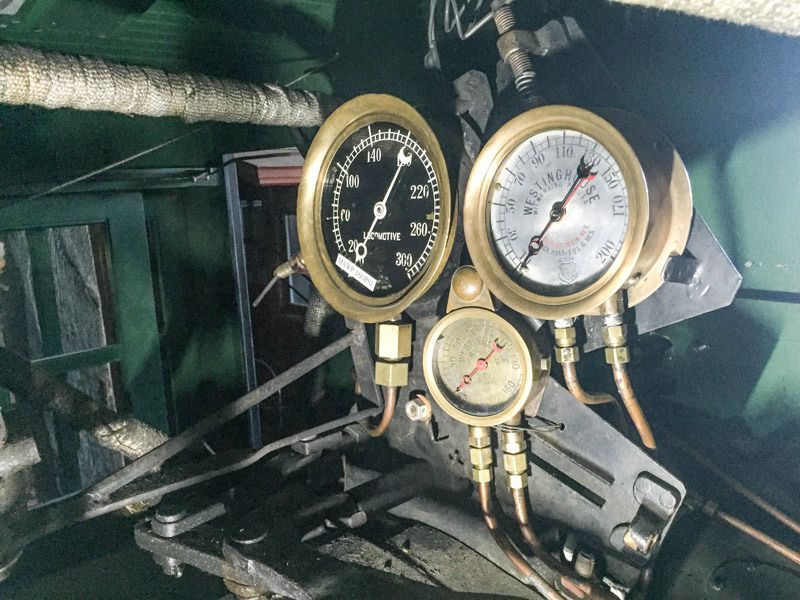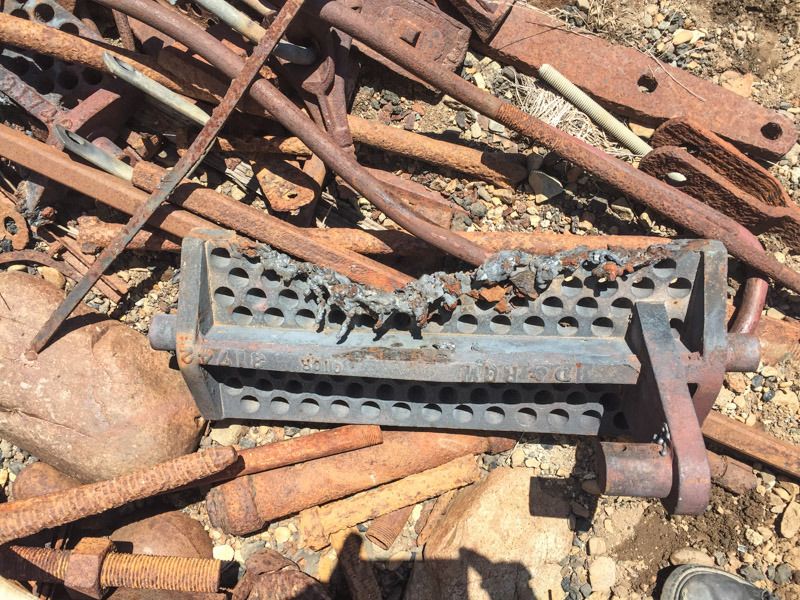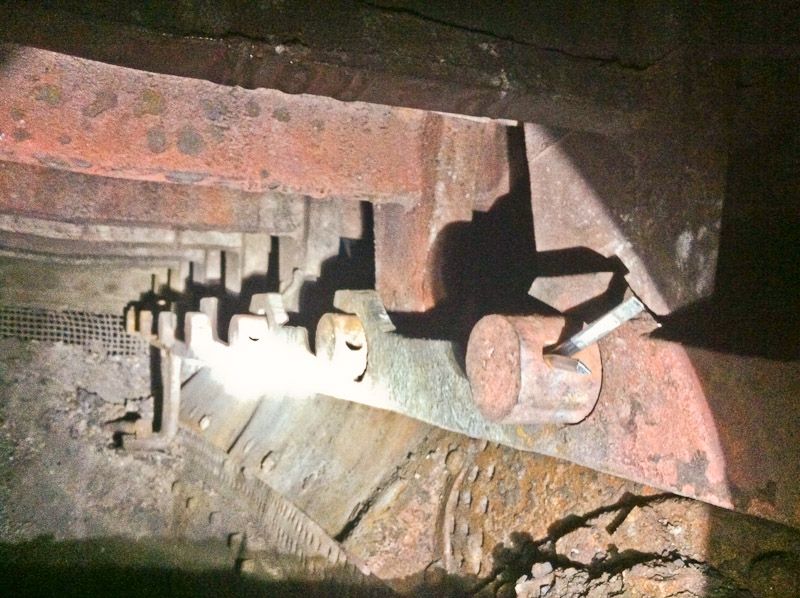Wow, nice work there Dave! Looks much better than before you started. 
Dave, . . . Great Work . . . (http://www.largescalecentral.com/externals/tinymce/plugins/emoticons/img/smiley-smile.gif)
Great work, Dave. You are a good craftsman.
EDIT: I found the answer to my question about walkways. Apparently the brakemen used to walk along the rooftops while the train was actually going down the track. Seriously? Then apparently they outlawed this practice in the 1950s or 1960s. No kidding.
John Passaro said:
EDIT: I found the answer to my question about walkways. Apparently the brakemen used to walk along the rooftops while the train was actually going down the track. Seriously? Then apparently they outlawed this practice in the 1950s or 1960s. No kidding.
That’s right. The back in the days before air brakes the brakemen walked from car to car cranking the brakes down by hand.
Actually the railroad safety appliance act of 1893 mandated air-brakes on all common carriers. This put an end to brakemen walking (running) along the rooftops setting and releasing the handbrakes. Roof-walks (running boards) were ordered removed from all cars that didn’t require them for loading in 1968 IIRC.
Railroads that weren’t common carriers, nor crossed state lines, could get away without updating to knuckle couplers and air brakes. So some logging railroads, and mining railroads, still used hand brakes and link and pin couplers well into the 20th century.
Edit; I stated air brakes, when in fact the act’s mandate was for automatic brakes. Some railroads used the Evan’s vacuum brake system.
Fridays trip to Silverton was uneventful. All the snow on the ground has melted and the temp was in the low 70’s, really a nice day.
Opened the Silverton Northern’s engine house doors for the first time since Fall. And there she sat, lonely and begging for attention.

The whole trip was planned to make an assessment of what was needed to do, before the Annual inspection. The 315 program now has a new CMO (Chief Mechanical Officer ) Tom Atzberger. Tom has been helping the 315 project since day 001. He comes with an extensive steam background. He even engineers, machines, builds and sells ($XX,000.00) 7 1/2" NG 4-6-0 live steamers. Tom and I made a fairly complete assessment of what was needed before the annual. Absolutely nothing major, just a short list of normal prep for annual stuff, and 10-12 nit-picky little stuff.
The one thing that I did do while there was pull the gages, so we could have them calibrated and certified before hand.

Three is all we really need. The Big Black one is the most important, it’s the main steam pressure gage. The other two are the Air pressure and the Brake pressure gages.
The 1st regular scheduled engine work day is called for on the 25th. Only 10 days to work on our other projects before then.
I smiled when I saw the assortment of cans and stuff on the pilot deck. Its just like my workbenches, things just collect on open flat surfaces.
Every flatsurface in our shop is littered with stuff too… Oil cans micrometers, odd drill bits and peices of pipe, wrenches and castings, Miss matched nuts and bolts, rags and brake parts.
Actually the stuff on the pilot wasn’t put there by the crew, We (the Crew) actually keep the added stuff off of her. It’s really all the other people around the shop / Engine house. The Durango Railroad Historical Socity ( 315 ) uses the Silverton Northern Engine House, which is owned by the San Juan County (Colorado) Historical Socity. They use the engine house for numerous other local projects, we share, in fact the paint was for some other project, and the pilot is the first flat surface inside the door. The rest of the engine house is typical of the any flat surface attracts all the stuff that it will hold symptom. The crew keeps setting all the accumulated stuff off of the ol’ gal.
I’ve mentioned before how different it is to fire 315 compared to the big “K’s” of the D&S and the C&T. This is what happens to 1 1/2 " thick cast iron from improper firing.

Scrap… I wonder if someone would give us a few bucks on e-bay for some “Genuine Historical Steam Engine Rare Parts” May be 100+ years old. I could provide a certificate of authenticity.
The last thing you need is for some ham-handed klutz to spill orange paint on the deck. I’d just put that stuff in the dumpster. “Oh, I thought you wanted me to throw it away for you.” (http://largescalecentral.com/externals/tinymce/plugins/emoticons/img/smiley-innocent.gif)
You mean like a chicken stepping in some spilled green paint? Nah… That would never happen!
Yea, I would be upset if someone set paint cans om my antique locomotive. Especially if they left paint marks on the locomotive.
The fire melted the grate? Yow! I hope that’s not a difficult part to replace.
Ray Dunakin said:
The fire melted the grate? Yow! I hope that’s not a difficult part to replace.
I wonder if someone didn’t try some coke to start some damp coal, that would make a hot enough fire.
John
You shouldn’t be doing coke when…Oh, coke!
Never mind.
No Coke… When firing you always want a bed of coals over the entire grate. If you allow an open area (hole in the fire bed) the feed air rushes thru the hole instead of flowing thru the bed. The draft starts sucking a lot of air thru that area and starts a mini blast furnace effect. The center is cooler, but the outer edges, where there is plenty of burning coal, gets really hot. If left to its own, meltdown…
Yes, they are nonexistent except from the original D&RGW mold patterns. Yes, we have had to have several spares cast from the molds. $$$$ we don’t want to spend. To replace you must physically crawl inside the ash bin to Un-pin from the rocker lever. Talk about dirty work!
Photobucket wouldn’t let me post these yesterday. So here are the pics.

This is looking towards the firebox end. Grates above, ash below. The rocker bar on the right side, and the pins through. Just gravity holds them in.

Simple but effective. Pain in the ass to change.
Gives meaning to Dropping the Fire, now we can see where it goes!
Thanks for beating the bucket!
John
Wed 25th, will be the first of several 315 work days before or annual inspection work in July. Will be in Silverton all day. Any thing up there that any of you would like me to shoot or report on? Let me know.